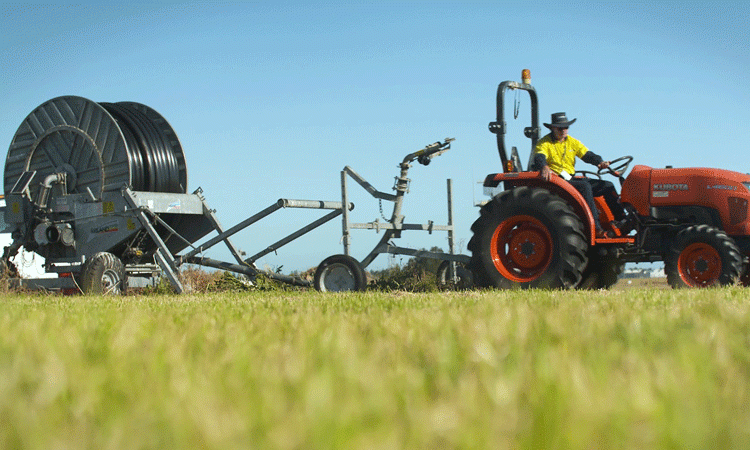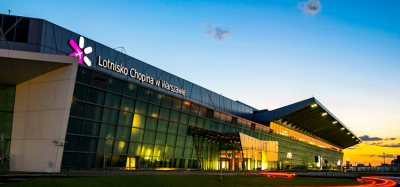Investing in sustainability is imperative for a successful future
- Like
- Digg
- Del
- Tumblr
- VKontakte
- Buffer
- Love This
- Odnoklassniki
- Meneame
- Blogger
- Amazon
- Yahoo Mail
- Gmail
- AOL
- Newsvine
- HackerNews
- Evernote
- MySpace
- Mail.ru
- Viadeo
- Line
- Comments
- Yummly
- SMS
- Viber
- Telegram
- Subscribe
- Skype
- Facebook Messenger
- Kakao
- LiveJournal
- Yammer
- Edgar
- Fintel
- Mix
- Instapaper
- Copy Link
Posted: 28 November 2019 | Caroline Wilkie - Australian Airports Association | 1 comment
New terminals and runways require long-term traffic forecasting and careful consideration of changing technologies, but they also provide the chance to explore how our workforce, our climate and our communities may change over time, highlights Caroline Wilkie, CEO of the Australian Airports Association (AAA).


As the global conversation on sustainability has deepened in recent years, it has emphasised the importance of taking a long-term view in the development of major infrastructure. While our industry as a whole must consider the challenges ahead, the very nature of airport-investment cycles presents a clear opportunity to deeply embed sustainability into their day-to-day operations.
We have seen this long-term focus lead to a tangible emphasis on sustainability within Australia’s airports, as they seek to maximise performance, strengthen their teams and stakeholder relationships, and reap the most from their assets. That’s changing how airports are financing their investment plans, improving environmental performance and planning for a sustainable future.
Sustainability drives financial performance
Recognising that strong sustainable performance goes hand-in-hand with long-term financial success, Australian airports have sought new opportunities to further embed sustainable practice into their day-to-day operations.
For some, that has meant ensuring sustainability is directly and measurably linked to their finance arrangements. In 2018, Adelaide Airport confirmed they had signed Australia’s first sustainability performance-linked loan with the bank ANZ. The seven-year loan incentivises the airport to improve against an agreed set of Environment, Social and Governance (ESG) criteria. The sustainability performance component of the loan is based on Sustainalytics’ ESG Risk Ratings. This clear link between the airport’s financing and long-term sustainability performance around issues such as risk management, governance, culture, customers and stakeholders will encourage further integration of sustainability in its day-to-day operations.
Earlier this year, Sydney Airport also confirmed it had finalised the country’s first syndicated (multi-bank) sustainability-linked loan in Australia. This means the airport’s funding costs will now be directly linked to its sustainability performance over time, as measured by Sustainalytics. As the largest airport sustainability-linked loan globally at the time of its announcement, the commitment recognises the value the airport places on ensuring a strong sustainability focus is embedded across all aspects of its operations.
These are great examples of finding new ways to connect operations with a sustainability strategy. Importantly, the nature of the loan structures incentivise a constant focus on building the airport’s sustainability credentials long term.
The global effort to improve environmental outcomes
Many of Australia’s major airports are active participants in ACI’s Airport Carbon Accreditation programme. While Sunshine Coast Airport has already achieved carbon neutrality, Adelaide, Brisbane and Sydney airports have also reached Level 3 Optimisation status. This means they have reduced their own carbon emissions, whilst also engaging the wider airport community to identify opportunities to support emission reductions. This is an important part of Australian airports’ contribution to the global industry effort to reduce carbon emissions. However, it is also worth noting that those conversations extend far beyond the community itself. We have seen a growing conversation between airports and their stakeholders to address a wide range of environmental issues, from how to reduce carbon emissions and noise impacts, to waste. This collective conversation is essential for the future of our airports.
Smart design to future proof Australian airports
The long-term nature of airport investment highlights the value of good planning and smart design to mitigate against climate-change risk in the future. The potential for more rain, rising temperatures, sea-level rises, wind changes and extreme events must be considered when future planning. While this is an issue that is shared by the infrastructure sector globally, we have seen Australian airports address these risks in many ways.
At Brisbane Airport, the new runway project has been highlighted as an example of best practice when considering climate-change adaptation as part of a major infrastructure project. While the runway is expected to open next year, the design and environmental impact assessment process started in 2005. The runway is an essential part of the airport’s growth and will support the state’s tourism and trade economy long term. But the runway itself is being constructed on low-lying ground, and effective planning to ensure its resilience over time was essential.
Past weather conditions – as well as predicted changes to weather conditions in the future – were considered as part of the project planning process. This work not only helped inform the runway length due to potential temperature increases, but also informed decisions associated with the runway height to account for potential sea-level rise and increased storm surges. This significant investment in the planning of the runway to ensure its smart and sustainable design will ensure the airport, and the Queensland economy more broadly, will be able to maximise the benefits this project will deliver.
On a smaller scale, there are a host of projects underway across airports to deliver more sustainable and efficient airport operations. Adelaide Airport is one example: The airport recently completed a trial in partnership with SA Water to investigate ways to lower the airfield’s ambient temperature. The trial used stormwater to irrigate an area near the airfield, growing lucerne and other grasses.
The use of lucerne was most effective in the trial, with the irrigation of the crop on hot days leading to the ambient temperature being reduced by two to three degrees Celsius. With Adelaide experiencing temperatures as high as 46°C last summer, a reduction in the ambient temperature could have a tangible impact on the operational efficiency of the airport, while also reducing power use. The next phase of the trial will further explore the impact of changes in ambient heat on aircraft efficiency to better understand the potential benefits a project like this may deliver.
This is just one example of smart thinking being applied to common challenges faced by airports to support improved efficiency and maintain resilient operations.
People and relationships are key to success
Of course, to tackle the big challenges that issues such as climate change present, we first must have strong and sustainable teams and relationships. Australian airports, like many businesses, are investing in the health and wellbeing of their people to ensure they can drive improvements across the business.
The Australian Airports Association (AAA) supports the industry’s efforts to improve diversity, with the launch of our Women in Airports Network earlier this year. This provides a forum to discuss the advancement of women in the industry to ensure a diverse and sustainable workforce for the future.
Biography
Caroline Wilkie has been CEO of the Australian Airports Association (AAA) since 2011. The AAA represents all major regular passenger transport airports in Australia as well as council airports. The membership spans from councils with grass-strip runways to Australia’s major gateways. The AAA also represents a further 140 corporate members and is engaged in research, developing industry publications, education, advocacy and major industry events. Wilkie has a Master’s in Public Affairs and more than 15 years’ experience in Association Management.
Issue
Related topics
Airport construction and design, Airport development, Emissions, Funding and finance, Sustainability, Sustainable development
Related airports
Adelaide Airport (ADL), Brisbane Airport (BNE), Sunshine Coast Airport (MCY), Sydney Airport (SYD)



















Fantastic article Caroline, great to see the AAA promoting Australian airport efforts in sustainability.